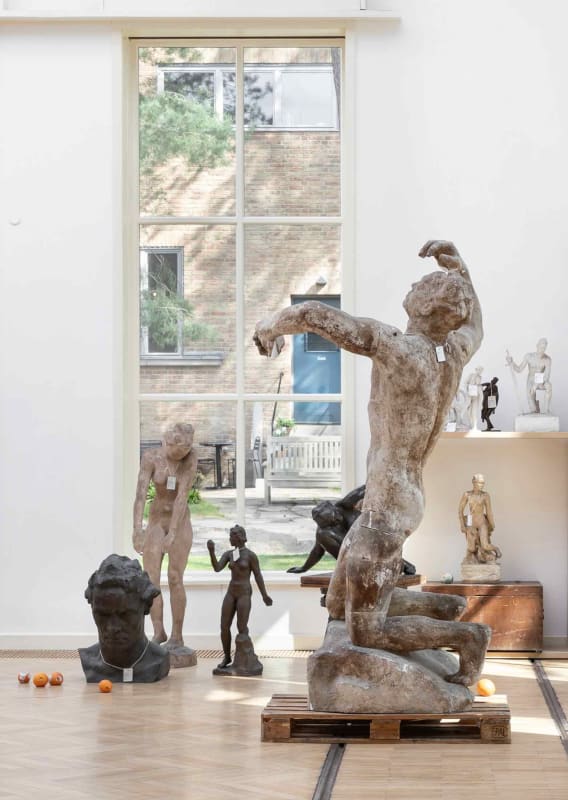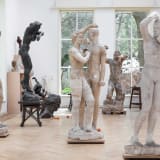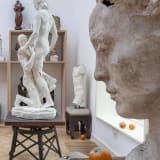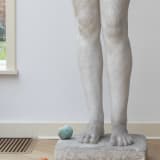Álvaro Urbano and Danh Vo - Tea and Dry Biscuits George Kolbe Museum
2025 marks the 75th anniversary of the Georg Kolbe Museum. The exhibition presented on this occasion takes its origins from the institution's founding, which opened its doors in 1950 as the first new museum in post-war West Berlin. At that time, the museum served as a memorial to the sculptor Georg Kolbe, who died in 1947 and lived and worked on Sensburger Allee from the time the extraordinary ensemble was built in 1928. The studio spaces, opened to the public in 1950, had seemingly remained untouched since Kolbe's death. Numerous sculptures on display provided insight into the artist's entire oeuvre. Kolbe's personal belongings elevated the work and living space to a place of veneration.
The exhibition focuses on the staging of memory and examines remembering in its various forms – both private and public. Contemporary artists offer their own reflections on the topic, opening up diverse perspectives on the past and present. What was remembered in 1950? How and what do we remember today, and what forms does this memory take? On the one hand, the exhibition explores a critical examination of the museum's own institutional history, of imagined, felt, and lived (family) ties that have had a lasting impact on the museum. On the other hand, the exhibition takes a self-reflective look at the topic of musealization and the management, idealization, and narration of history and memory.
Álvaro Urbano, Noches en los Jardines de España, 2020
In Georg Kolbe’s former studio, oranges lie on the floor, many of them rotten. Álvaro Urbano’s work Noches en los Jardines de España (Nights in the Gardens of Spain) refers to the Impressionist piece of the same name by the Spanish composer Manuel de Falla (1876-1946). It was first performed at the Madrid Opera in 1916. Due to Francisco Franco’s fascist rule and fear of war, the composer emigrated to Argentina in 1939. A year earlier, in 1938, Georg Kolbe had traveled to Spain to create a portrait of Franco. Casts of this portrait were presented to Franco and Adolf Hitler as gifts. The portrait was not exhibited in the museum in 1950. However, it is in the museum’s collection.
Danh Vo, 2.2.1861, 2009
In 2009 Danh Vo became aware of a farewell letter written by Jean-Théophane Vénard to his father on the last day of his life. Vénard was a French missionary in Indochina (today's Vietnam, among other places). The title of the work marks the date of Vénard's beheading—one of the many executions of Catholic missionaries that preceded the French colonization of Vietnam in the mid-19th century and serves as legimitation for the colonizers. Pope John Paul II canonzied Vénard in 1988. After the discovery, Vo asked his father Phung Vo, who did not speak French, to recreate hnadwritten copies of the French language letter. The number of copies is determined by the date of the father's death, after which the letter will no longer be copied.
Following Danh Vo's instructions, Phung Vo's letter, copied for this exhibition, was sent by mail to the George Kolbe Museum. In this work, Danh Vo links the story of Vénard and his father with that of his own father and himself. It also comments on Vietnam's brutal colonial history, the effects of which also affected Vo's family. In 1979, they fled Vietnam in a boat bult by his father. Captured by a Danish ship, they were granted refugee status in Denmark, where Vo grew up and where his family lives today. In Vietnan, Phung Vo secretly converted to Catholicism.











